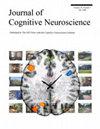潜因推断中时间的不确定性。
IF 3.1
3区 医学
Q2 NEUROSCIENCES
引用次数: 0
摘要
人类从过去的经验中归纳出卓越的能力,这需要将连续经历的事件解析为离散、连贯的单元,并将它们与过去的类似经验联系起来。在这一过程中,时间是一个关键因素;然而,在归纳过程中如何使用时间信息仍不清楚。潜在原因推理提供了一个贝叶斯框架,通过建立一个世界模型,其中相关的经验是由一个共同的原因产生的,从而对经验进行聚类。在这里,我们通过一项新颖的任务,让参与者观看 "微生物 "刺激,并明确报告他们为每种微生物推断出的潜在原因("菌株"),来研究时间信息在潜在原因推断中的应用。我们的研究表明,人类在推断潜因时会考虑时间因素,因此最近推断出的潜因更有可能再次被推断出来。特别是 "持续 "模型,即在一次观察中推断出的潜因有固定概率继续导致下一次观察,对数据的解释能力明显优于其他两种时间敏感模型,尽管个体差异很大。我们的研究表明,我们的任务和这一模型具有良好的心理测量特性,突出了它们在计算精神病学或神经成像研究中量化个体差异的潜在用途。本文章由计算机程序翻译,如有差异,请以英文原文为准。
The Ubiquity of Time in Latent-cause Inference
Humans have an outstanding ability to generalize from past experiences, which requires parsing continuously experienced events into discrete, coherent units, and relating them to similar past experiences. Time is a key element in this process; however, how temporal information is used in generalization remains unclear. Latent-cause inference provides a Bayesian framework for clustering experiences, by building a world model in which related experiences are generated by a shared cause. Here, we examine how temporal information is used in latent-cause inference, using a novel task in which participants see “microbe” stimuli and explicitly report the latent cause (“strain”) they infer for each microbe. We show that humans incorporate time in their inference of latent causes, such that recently inferred latent causes are more likely to be inferred again. In particular, a “persistent” model, in which the latent cause inferred for one observation has a fixed probability of continuing to cause the next observation, explains the data significantly better than two other time-sensitive models, although extensive individual differences exist. We show that our task and this model have good psychometric properties, highlighting their potential use for quantifying individual differences in computational psychiatry or in neuroimaging studies.
求助全文
通过发布文献求助,成功后即可免费获取论文全文。
去求助
来源期刊
CiteScore
5.30
自引率
3.10%
发文量
151
审稿时长
3-8 weeks
期刊介绍:
Journal of Cognitive Neuroscience investigates brain–behavior interaction and promotes lively interchange among the mind sciences.

 求助内容:
求助内容: 应助结果提醒方式:
应助结果提醒方式:


